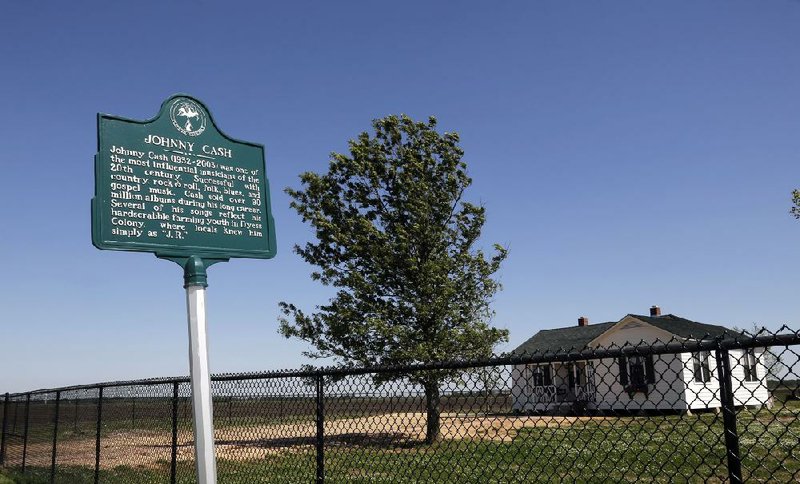DYESS — Money and memorabilia from Johnny Cash's family and friends have helped historians restore a significant part of the Historic Dyess Colony, a government collective built to pull Depression-era families out of poverty.
The country music icon's boyhood home, along with the colony's former headquarters, will open Saturday to reflect everyday life in a northeast Arkansas community built on once-sunken land.
"Restoring the Dyess Colony Administration Building, and even saving at least one of the typical colony houses, would have been a worthwhile project, even without the Johnny Cash connection," said Ruth Hawkins, the executive director of the Heritage Sites program at Arkansas State University.
"But the project would not have gotten anywhere near the public support that it has, and it would not be a major tourism draw," she said.
Before he was the Man in Black, he was J.R. Cash, a son of Kingsland farmers who successfully applied to take part in a 1930s Works Progress Administration experiment. The federal government brought in 487 families and gave them land and a mule.
"This was a practice in socialism," said Roscoe Phillips, who was born at Dyess 77 years ago. "They took people who had nothing and gave us something. It wouldn't happen today."
Under selection — the application ran on for eight pages — families were rewarded for their rugged independence but on arrival had to share their excess with the community. Their contributions qualified them for "doodlum," a paper currency not unlike scrip offered in company towns.
Members of the Cash family were "representative colonists," Hawkins said, so it was appropriate to incorporate their former home into the preservation effort. It also helps that countless Cash fans will plunk down $10 for a tour of both buildings.
A restored five-room house northwest of town holds items that belonged to the singer's parents: a shaving mug in the bathroom and an upright piano atop red linoleum in the living room. J.R. shared a bedroom at the front of the house with three siblings. Although there was a toilet and bathtub, the home never had running water. Electrical service arrived in 1945.
At the museum back in town, Cash's 1950 Dyess High School yearbook, given to his daughter Rosanne in 2000, rests in a special wing dedicated to the singer and his family.
"It's been one of my most prized possessions. It's yours. Merry Christmas," Cash wrote to Rosanne on personal stationery with "Johnny Cash" scratched out and "Dad" written in.
Without Cash's fame, it'd be a lot tougher to save places like the Dyess Colony, one of nearly 100 proposed resettlement sites nationwide. Arkansas State used the same principle in 1999 when it restored Ernest Hemingway's writing studio in Piggott, 50 miles north. He worked there while married to Pauline Pfeiffer, the daughter of a prominent family.
